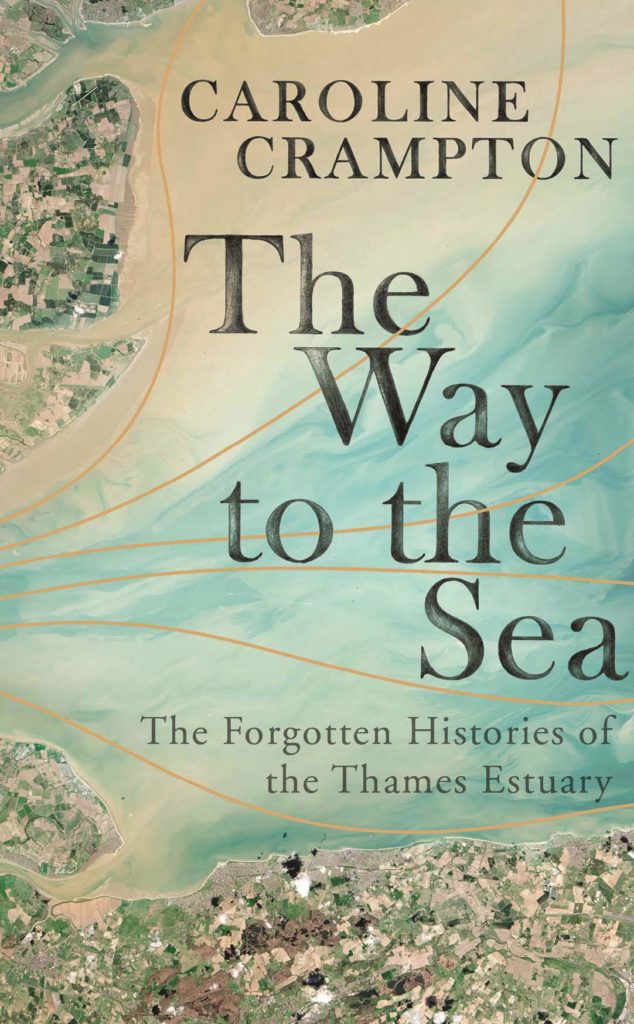In her first book, Caroline Crampton navigates the waters of the Thames Estuary, and seeks out its stories: empty warehouses and arsenals; the Thames barrier; ship wrecks still inhabited by the ghosts of the drowned; vast Victorian pumping stations; the river banks, layered with archaeological Anglo-Saxon treasures; literature inspired by its landscape, and the estuary’s wildlife and shifting tidal moods. Clare Wadd reviews.

In her first book, The Way To the Sea, Caroline Crampton travels the Thames, from source to estuary and beyond, chronicling the river’s sprawling history and its far-reaching impact on our history and our present.
Her parents are sailors who arrived in the UK by boat in the 1980s, living for a while at St Katherine’s Dock, and then in Sittingbourne in Kent, where she grew up. She spent her childhood and teenage years on their boat on the river and in the estuary, absorbing the shades of brown and grey, the smells, the changing light and different tides. She studied at Oxford, then moved to London, living all her life to date near to, and being shaped by, this magnificent river.
I thought I knew the Thames and its history well, and I did know some of the stories she relates from its literature and its past: Three Men in a Boat, Great Expectations, Dickens’ home at Gads Hill Place, which I have walked past, Heart of Darkness and The Great Stink. But there was much for me to learn here too; about the deadly ague (malaria) in the estuary through most of its history until the marshes were drained, and about the graveyard on the Hoo Peninsula where Pip and Magwitch meet. Through her journey I came to understand more about the estuary’s deadly shallow water, about dredging, the narrowness of the channels for boats to navigate, Thames Gateway port, and about romantically named buoys – Black Deep and Knock John. I’m astonished that her childhood – a proper sailing one, with charts and mysterious instruments and adventurous parents – was, like mine, spent buried in Swallows and Amazons, though we grew up 20 years apart at different ends of the country.
I thought I knew about Bazalgette’s sewers, but I hadn’t really thought about what the Thames was like before they were built (foul). I thought I knew about the sinking of the Princess Alice, Britain’s most terrible inland waterway disaster in which between six and seven hundred people died – the precise number isn’t known because there was no record of who was on board – but I hadn’t realised that most of the deaths were due to the raw sewage released into the river just before the accident, rather than to simple drowning. If you’re thinking it sounds like there’s quite a lot about shit in The Way to the Sea, you’re right, there is.
On her journey Crampton talks about the rise and fall of the docks and their impact on the landscape, about devastating floods and subsequent flood defences. And most of all about the never-changing solution for London’s upper and middle classes to undesirable things of all types – be they people, industry, rubbish or sewage – to send them east down the estuary, where hardly anyone lives, and certainly no one of any consequence does.
Caroline Crampton weaves a little of herself and her life into the journey she takes us on downriver, and it’s these glimpses of her that make The Way to the Sea really sing. It’s a rich, tender love letter to the great ugly beautiful river and to everything it has been, is, and will be to those of us who live in its orbit.
*
The Way to the Sea is out now, published by Granta, and is available to buy here (£16.99).